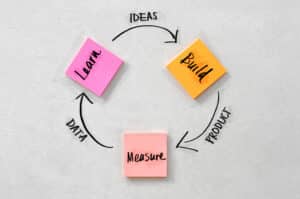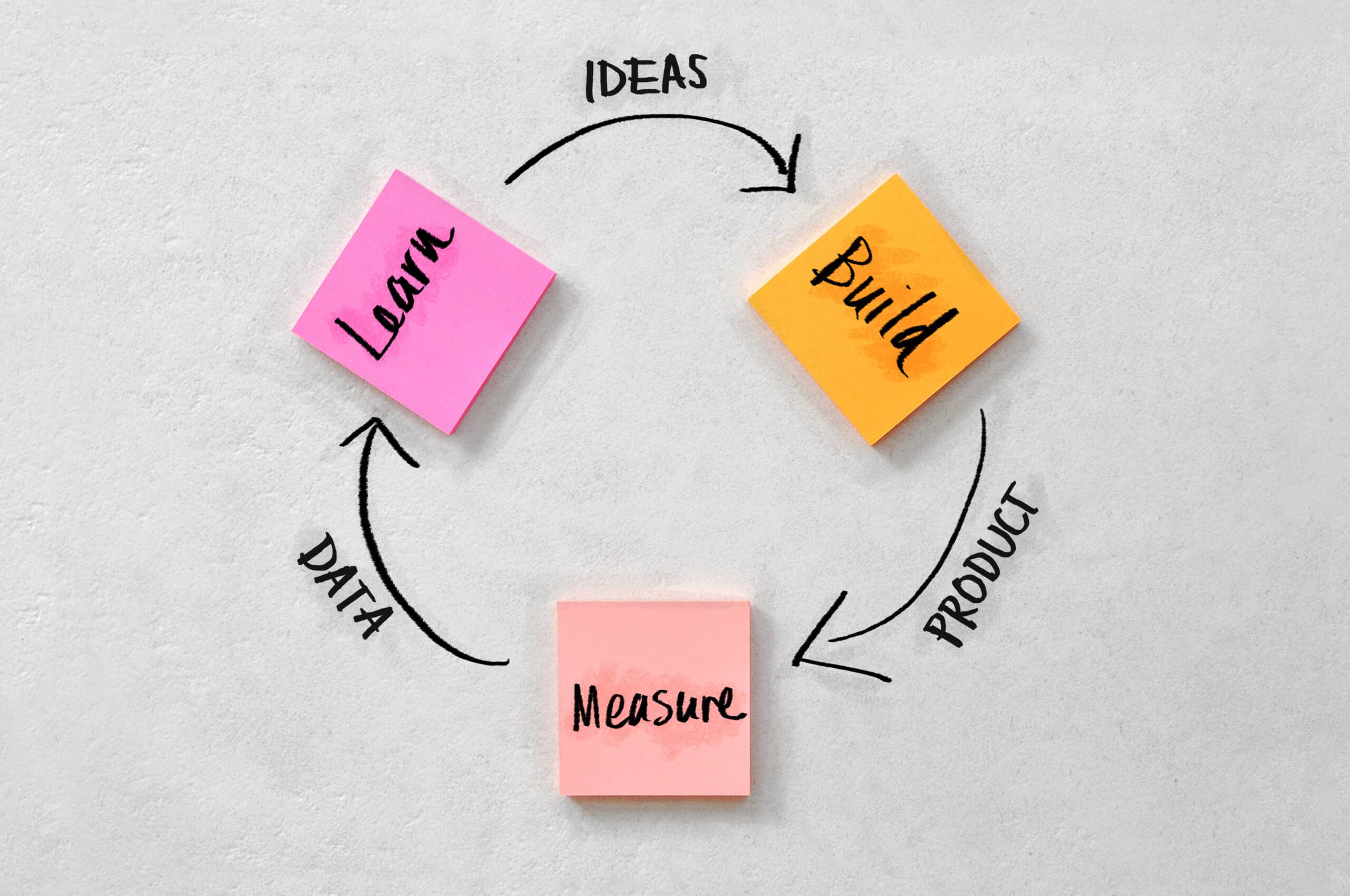A Growing business is a sign of a healthy business. For a new or established business to continue experiencing growth and remain successful, an effective strategic plan is essential. A good growth strategy serves as an outline of your current situation, goals, objectives, target markets, competition, desired results and more – ensuring that your growth trajectory remains on track. It also provides details such as budgeting requirements, timeline estimates and resources available, as well as taking into account your company’s culture and values, strengths and weaknesses. Lastly, it should include key performance indicators to measure progress. Having a thorough yet concise plan can be the difference between growth and stagnation.
Blog Summary
– A strategic plan is essential for business growth and success
– A business growth plan should include information on the current situation, goals, objectives, target markets, competition and desired results
– Details on implementation, such as budgeting requirements, timeline estimates and resources
– A business’s culture and values, strengths and weaknesses should also be taken into account
– Key performance indicators are used to measure progress and provide encouragement.
The Data-Driven Approach: Outline of the Company’s Current Situation, Goals and Objectives
A good strategic plan will always start with a data-driven approach. This means outlining the company’s current situation, goals and objectives. By understanding your current position in terms of growth, you can then set realistic yet ambitious targets and plan how to meet them.
During this step, it’s important also to consider the competitive landscape, target markets and any areas of opportunity. A good plan should also be tailored to your growth ambitions – whether you want to expand regionally or globally. Having a clear understanding of both the internal and external environment is instrumental in developing an effective growth strategy.
Customer Base
Reviewing your existing customer base is an important step in developing an effective growth strategy. By understanding who your existing customers are, you can gain valuable insight into what your market looks like and how best to reach them. Knowing the buying behaviour of new and existing customers can help inform marketing tactics that will drive sales.
You can also uncover trends in customer feedback, preferences and sales opportunities to help determine which areas of the business are most important for growth. Analyzing customer data can provide insight into how to reach new customers and increase growth in existing markets.
What is your market?
When developing a business growth plan, having a clear idea of your market is essential. Knowing who you’re targeting will inform which strategies to focus on and help ensure that growth plans are tailored to the right audience. It allows you to understand customer preferences, buying behaviour, and growth opportunities in order to create more effective campaigns and strategies.
Knowing your market also helps you understand how to stand out from the competition and how best to reach new customers. Furthermore, understanding customer trends and growth opportunities can help you keep up with the latest developments in your sector. By having a clear idea of who your target market is, businesses can ensure that growth plans are tailored for maximum impact.
Knowing Your Market Share: A Growing Business’s Competitive Edge
Having a clear understanding of your business growth plan is also essential when it comes to knowing your market share. Knowing how you compare to competitors within the same industry can help you adjust strategies and tactics accordingly.
With accurate data on market size, growth and profitability, you can determine where your business fits in the broader market. This can be helpful when deciding whether to focus on expanding existing markets or targeting new ones.
Being aware of potential growth opportunities within the current market is also important for staying ahead of the competition. Additionally, understanding customer preferences, trends and buying behaviour allows you to adjust plans accordingly. By monitoring the growth of your competitors, you can stay on top of trends and adjust strategies in order to remain competitive.
Direct competitors
Analyzing your direct competitors is a key component of developing a growth strategy for your business. This involves studying the competitive landscape in order to gain an understanding of what strategies and tactics your competitors are using to stay ahead. It can also help uncover growth opportunities that you may not have previously identified.
Gaining knowledge about their pricing, product offerings, customer service, marketing tactics, and growth strategies can help you hone in on areas of growth for your own business. Additionally, understanding how their customers interact with them can help inform customer outreach and growth initiatives. By studying the competition’s growth patterns, you can gain insight into potential opportunities that can be used to grow your own business further.
Business Growth Ambitions
When it comes to developing a business growth plan, the key step is to identify your growth ambitions. Are you looking to grow locally or from an international platform? Having a clear understanding of where you want your business to go will help inform which strategies and tactics to prioritize in order to achieve growth objectives.
Local growth plans may involve increasing customer reach through local campaigns and marketing initiatives. International growth ambitions can include expanding into new markets, targeting global customers and exploring export opportunities and other global platforms.
Implementation Details: Budgeting Requirements, Timeline Estimates and Resources Available
Once the data-driven approach has been established, implementation details can be considered. This includes budgeting requirements, timeline estimates and resources available. Identifying what is necessary to facilitate growth in a cost-effective manner is key. It’s important also to consider growth in terms of operational efficiency and scalability. Building a plan that is cost-effective yet still capable of achieving objectives is essential. If growth ambitions are realistic, it’s often possible to adjust the budget accordingly and identify areas where resources can be saved or maximized.
The timeline estimates should also take into account any potential growth periods or slow seasons and plan for both. Finally, it’s important to identify the resources available to you as well as those that may need to be acquired in order to meet objectives. From financial resources to personnel and technology, having a clear understanding of what is necessary can help you develop an effective strategic plan that fits your growth ambitions.
Market Strategy
Developing marketing strategies for growth requires a detailed approach. Firstly, it’s important to identify which marketing tactics are the most effective for your business and target markets. This could include anything from digital advertising to traditional print campaigns, PR initiatives and more. Understanding who your target market is and how they interact with your business can help you identify which strategies should be prioritized in order to accelerate growth.
Digital Marketing
Digital marketing is a powerful tool and can reach customers both locally and internationally. It’s important to ensure that campaigns are tailored to each market in order to maximize growth potential. Additionally, understanding how customers interact with your business online is essential in developing effective growth strategies.
Social Media
Social media is an integral part of today’s growth strategies. It provides a platform for businesses to connect with their audiences, build relationships and increase brand awareness. Utilizing social media platforms such as Facebook, Instagram, Twitter and LinkedIn can help a business reach targeted audiences quickly and efficiently. With the ability to segment customers by demographic characteristics and interests combined with the capability to create engaging content, businesses can reach potential customers with ease. Additionally, social media is an effective tool for building relationships and creating trust with current and potential customers.
Landing Pages
Creating optimized landing pages is an important part of any growth strategy. A well-designed welcome page provides a platform to capture leads and drive conversions. Designed effectively and tailored to the customer’s journey, they can help businesses increase their conversion rates and, ultimately, achieve growth objectives. The key is to create a sales funnel that captures potential customers’ attention, educates them and drives them to take action. Utilizing A/B testing is also recommended in order to identify the most effective content and design for each landing page. By understanding customer behaviour and optimizing each stage of the sales funnel, businesses can increase leads and conversions, which will lead to growth.
Customer Loyalty Programs
Customer loyalty programs are a great way to drive growth and increase customer engagement. They incentivize customers to keep returning and offer rewards for continued loyalty. Additionally, they help collect valuable data about customers that can be used to inform growth initiatives.
Networking Events
Attending networking events is another great way to grow your business. It’s an opportunity to meet potential customers, partners, and vendors in person. It can also be a great way to connect with like-minded individuals who may be able to offer valuable advice about growth strategies and tactics. Additionally, networking events can help build visibility for your business both locally and internationally.
Considering Your Company Culture, Values and Strengths/Weaknesses
In addition to the data-driven approach and implementation details, a good strategic plan should also take into account the company culture, values and strengths/weaknesses. After all, growth is achieved not only through planning but through the people who will bring plans to life. Identifying the values and culture of your organisation can help you set realistic growth objectives that reflect this. Additionally, understanding your strengths and weaknesses as a company can help you identify areas of growth potential and where more resources may need to be allocated.
Successful Business Framework
Strategic partnerships can be a great growth tool for businesses, allowing them to access new audiences and resources. Operating systems, on the other hand, provide the infrastructure required to support objectives such as scalability.
Additionally, an effective organizational structure is a key to enabling growth initiatives. It allows businesses to assign roles and responsibilities that are tailored to each growth objective and ensure partnerships, operating systems, and the organizational structure is all key strengths of a business that can help it reach growth objectives.
Key Performance Indicators to Measure Progress
Finally, a good growth plan should include key performance indicators to measure progress. Having measurable objectives that internal and external sources can track is essential for success. This could include sales targets, customer service metrics, growth in customers or markets and more. By having clear goals that are based on data-driven insights and tailored to the growth objectives of your organisation, you can ensure that growth is achieved in a cost-effective and sustainable manner.
Key Performance Indicators (KPIs)
KPIs are essential in tracking growth and understanding how each growth strategy performs. Businesses should identify the most important KPIs to track, such as customer acquisition or customer retention rate of new customers, cost per acquisition (CPA), return on investment (ROI), customer loyalty etc. Additionally, businesses should consider setting up automated systems to track growth and ensure strategies are on track. By doing so, businesses can quickly identify any areas that need improvement or changes to be made in order to achieve growth objectives.
Business growth Plan vs a Business Plan
The main difference between a business growth plan and a business plan is the purpose of each document. A business growth plan focuses on identifying specific strategies that can be implemented to grow an existing business, such as analyzing current market trends and leveraging potential opportunities.
A business plan provides an overall view of the entire company, its mission statement and objectives, financial projections and growth strategy. Both plans are important documents. However, a business growth plan provides more detailed insight into how the business can succeed in specific growth areas. The growth plan also focuses on short-term objectives, whereas the business plan outlines a longer-term vision for the company.
Ultimately, an effective growth plan should be tailored to the specific goals of each business. By utilizing the key elements outlined above, a business growth plan should be able to achieve success and take the company from its current status to new growth heights.
Conclusion
Having a strategic growth plan is essential for any business. By considering data-driven insights, implementation details, company culture, values and strengths/weaknesses, as well as key performance indicators to measure growth success, you can ensure that growth is achieved in an effective and sustainable manner. Developing a growth plan tailored to your organisation’s growth ambitions is essential for scaling and ensuring ongoing commercial success.
Let’s Get Started
If you need assistance in developing a growth plan tailored to your organisation, reach out to us today. Our team can help you identify growth opportunities and develop an effective plan to take advantage of them. Get in touch now and let us help your business reach its growth goals.
FAQ
Q1. What information should I include in my growth plan?
A. Your growth plan should include data-driven insights, implementation details, company culture and values, strengths and weaknesses, and key performance indicators to measure success. These will help you develop an effective growth plan tailored to your specific growth ambitions.
Q2. How can I ensure growth success?
A. By having measurable objectives that are based on data-driven insights and tailored to the growth ambitions of your organisation, you can ensure growth is achieved in a cost-effective and sustainable manner. Additionally, it’s important to identify resources available as well as those that may need to be acquired in order to meet growth objectives.
Q3. How can I get help developing my growth plan?
A. If you’re looking for assistance in developing a growth plan tailored to your organisation, our team can help. Get in touch today and let us help your business reach its growth goals.


























